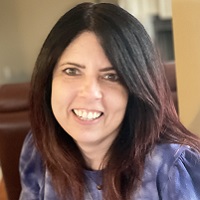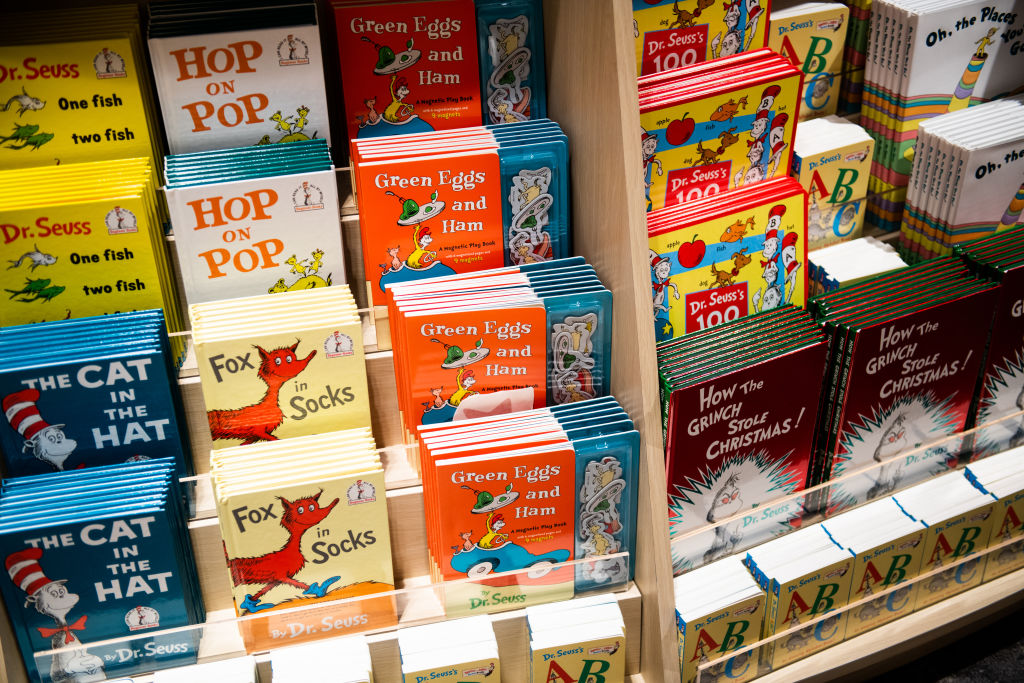Target-Date Funds Aren’t for Everyone
Target-date funds have their place, but they may not be right for your retirement savings plan.


Target-date funds are a preferred retirement savings vehicle for many Americans, reaching $4 trillion in assets in 2024. For good reasons: With a target-date fund you get access to a diversified portfolio that changes as your risk does. Plus, you can set it and forget.
During recent market turmoil, target-date funds proved their mettle. Between February 19, the market’s 2025 peak and April 8, the S&P 500 lost 18.6% while target-date funds covered by Morningstar lost 7.6%. These funds are also the path of least resistance in a world where everyone wants everything curated, from music playlists to streaming shows.
But just because they work for many retirement savers doesn’t mean they are the best option for all. There are certain scenarios in which a target-date fund may not be right for you.
From just $107.88 $24.99 for Kiplinger Personal Finance
Become a smarter, better informed investor. Subscribe from just $107.88 $24.99, plus get up to 4 Special Issues

Sign up for Kiplinger’s Free Newsletters
Profit and prosper with the best of expert advice on investing, taxes, retirement, personal finance and more - straight to your e-mail.
Profit and prosper with the best of expert advice - straight to your e-mail.
“For people who want a set-it-and-forget style, a target-date fund is great,” says Derrick Longo, a wealth advisor at Exencial Wealth Advisors. “If you want something more defensive or aggressive, you have to go outside the target date fund.”
Target-date funds and risk tolerance
When it comes to determining if a target-date fund is your best choice, David Blanchett, managing director, portfolio manager and head of retirement research for PGIM DC Solutions, says to consider your risk tolerance and risk capacity and compare that to what a target-date fund offers.
The whole idea behind a target-date fund, which is made up of several funds, is that the asset allocation automatically adjusts over the years. As you get closer to retirement, the investments become more conservative, with the asset allocation weighted more toward bonds than stocks. The glidepath or road map is tied to your retirement age. But that doesn’t take into account your unique situation.
“The two key drivers (when determining your investment make up) are risk preference — how someone feels about taking risks and risk capacity — how much risk they can take,” says Blanchett. “Some people are naturally more aggressive and don’t mind taking risks and others like to be more conservative. That’s a personal preference.”
The same goes for risk capacity. An individual may have a pension, other assets or more guaranteed income and can take on more risk than someone who will rely on Social Security and their 401(k) in retirement. “Those are reasons why someone should be in a portfolio that differs significantly from the target-date fund based on retirement age,” he says.
Retirement date isn’t the same for everybody
Then there is the when you plan to retire component. You may be 60 years old, but who's to say you won’t work for another fifteen years, which means you may be able to tolerate more risk than someone the same age who plans to retire at 65.
Or what if you are late to the retirement saving party and to catch up you need to be more aggressive than someone who is your age who has been saving for decades. A target-date fund won’t afford you that opportunity. “If they want full exposure to the S&P, they are not going to get that through a target-date fund,” says Longo.
While there are various target-date funds to invest in from a host of asset managers, the glide path tends to become more similar over time, rather than different. While fund managers may initially adopt a more aggressive or conservative glide path, Morningstar found that over time, they tend to converge to a similar makeup as investors approach retirement.
The target-date fund alternative
For 401(K) savers who want a more personalized retirement portfolio and the help from a professional, another option is an advisor-managed fund or managed account. With this type of account, a financial adviser manages the investments within your 401(k) instead of you choosing the funds yourself or defaulting to a target-date fund.
The asset allocation is typically based on 7 to 14 data points about the employee, which is used to create a personalized 401(k) investment plan, says David Montgomery, Managing Director of Retirement Plan Services at Concurrent Investment Advisors.
Changes to the asset allocation or investment choices are made by a professional adviser. Since the account is managed, it tends to have higher fees than a target-date fund. “Thanks to technology, a custom asset allocation can be created for individual employees on a mass scale,” says Montgomery. “It's for anyone who wants or needs something more specific than a target-date fund.”
Target-date funds are still better than DIYing it
Target-date funds may have their knocks, but if it's a choice between that or choosing the funds to invest your 401(K) savings in on your own, target-date funds tend to win out. After all, professional advisers come up with the asset allocation glide path. Additionally, they aren't emotionally tied to the portfolio, unlike individuals who select where they want their investment dollars to go.
“It does a very good job of getting people in a better situation than doing it themselves,” says Montgomery. “The average target-date fund earns 2% more on average per year than when people try to create an asset allocation.”
For people looking for the "easy" button, target-date funds are the winning strategy. But for those seeking more risk or a personalized approach, they lose.
Related content
Profit and prosper with the best of Kiplinger's advice on investing, taxes, retirement, personal finance and much more. Delivered daily. Enter your email in the box and click Sign Me Up.

Donna Fuscaldo is the retirement writer at Kiplinger.com. A writer and editor focused on retirement savings, planning, travel and lifestyle, Donna brings over two decades of experience working with publications including AARP, The Wall Street Journal, Forbes, Investopedia and HerMoney.
-
 4 Great Tools to DIY Your Own Financial Plan
4 Great Tools to DIY Your Own Financial PlanSmart Savings Several tools picked out by Kiplinger that DIYers can use to make their own financial plan.
-
 The 7-Month Deadline That Sets Your Lifetime Medicare Premiums
The 7-Month Deadline That Sets Your Lifetime Medicare PremiumsUnderstanding Medicare enrollment is crucial, as missing deadlines can lead to permanent late enrollment penalties and gaps in coverage.
-
 Retirees Living in Portugal: You Need a Post-NHR Tax Strategy
Retirees Living in Portugal: You Need a Post-NHR Tax StrategyWhen your 10-year Non-Habitual Resident tax break ends, you could see your tax rate soar. Take steps to plan for this change well before the NHR window closes.
-
 The 7-Month Deadline That Determines Your Lifetime Medicare Premiums
The 7-Month Deadline That Determines Your Lifetime Medicare PremiumsUnderstanding Medicare enrollment is crucial, as missing deadlines can lead to permanent late enrollment penalties and gaps in coverage.
-
 If You're a U.S. Retiree Living in Portugal, Your Tax Plan Needs a Post-NHR Strategy ASAP
If You're a U.S. Retiree Living in Portugal, Your Tax Plan Needs a Post-NHR Strategy ASAPWhen your 10-year Non-Habitual Resident tax break ends, you could see your tax rate soar. Take steps to plan for this change well before the NHR window closes.
-
 Could Target-Date Funds With Built-In Income Guarantees Be the Next Evolution in Retirement Planning?
Could Target-Date Funds With Built-In Income Guarantees Be the Next Evolution in Retirement Planning?With target-date funds falling short on income certainty, retirement plans should integrate guaranteed income solutions. Here is what participants can do.
-
 7 Ways to Plan Now to Save on Medicare IRMAA Surcharges Later
7 Ways to Plan Now to Save on Medicare IRMAA Surcharges LaterUnderstand the critical two-year lookback period and why aggressive planning before you enroll in Medicare is the most effective way to minimize IRMAA.
-
 The 'Best of Both Worlds' Rule of Retirement Spending
The 'Best of Both Worlds' Rule of Retirement SpendingIt's the 4% rule on steroids. Here's what it is and why it may work for you.
-
 Don't Let the Court Decide: Test Your Knowledge on Avoiding Probate
Don't Let the Court Decide: Test Your Knowledge on Avoiding ProbateQuiz Test your basic understanding of why having a estate plan is crucial to avoiding probate in our quick quiz.
-
 Your Year-End Tax and Estate Planning Review Just Got Urgent
Your Year-End Tax and Estate Planning Review Just Got UrgentChanging tax rules and falling interest rates mean financial planning is more important than ever as 2025 ends. There's still time to make these five key moves.
-
 7 Dr. Seuss Quotes Retirees Should Live By
7 Dr. Seuss Quotes Retirees Should Live ByYou're off to great places! Why Dr. Seuss is the retirement guru you didn't know you needed.